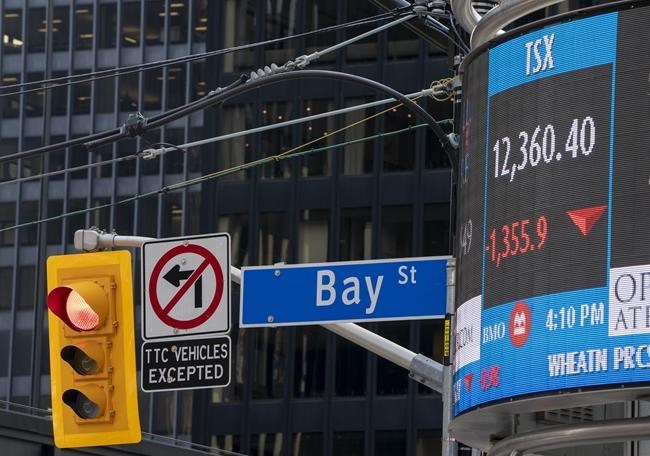TORONTO — Canada's main stock index closed slightly lower after reaching an intraday record but ended August by notching a seventh straight month of gains for the longest streak in more than four years.
The S&P/TSX composite index closed down 12.03 points to 20,582.94 after setting a record of 20.703.89 in earlier trading.
In New York, U.S. stock markets also dipped with the Dow Jones industrial average down 39.11 points at 35,360.73. The S&P 500 index was down 6.11 points at 4,522.68, while the Nasdaq composite was down 6.65 points at 15,259.24.
After largely ignoring the health risks from COVID-19, investors are starting to contemplate the impact of the Delta variant as U.S. consumer confidence numbers released Tuesday indicate that they are becoming wary, said Candice Bangsund, portfolio manager for Fiera Capital.
"I think investors are starting to contemplate what this means for equity markets, particularly given that valuations are trading at such lofty levels," she said in an interview.
The underlying tone of the market Tuesday was one of risk-off, which supported a higher gold price that allowed the TSX to outperform its U.S. peers.
The December gold contract was up US$5.90 at US$1,818.10 an ounce and the December copper contract was down slightly to US$4.38 a pound.
Materials was up 0.7 per cent with shares of Equinox Gold Corp. up nearly six per cent.
Energy was marginally higher as crude oil prices dipped as the impact of hurricane Ida on energy output started to wane.
The October crude oil contract was down 71 cents at US$68.50 per barrel and the October natural gas contract was up 7.2 cents at US$4.38 per mmBTU.
Industrials climbed 1.2 per cent as Canadian National Railway Co. shares surged 7.4 per cent after the U.S. transportation regulator unanimously rejected its application for a trust in its bid to buy Kansas City Southern. Shares of Canadian Pacific Railway Ltd., which is hoping to reignite its takeover bid, lost 4.6 per cent.
Meanwhile, the loonie slipped as Canada's economy had its worst quarterly stretch since the start of the pandemic, contracting at an annualized rate of 1.1 per cent between April and June.
The Canadian dollar traded for 79.26 cents US compared with 79.35 cents US on Monday.
Bangsund said she wouldn't be surprised if Tuesday's softness isn't the start of periodic bouts of volatility as investors digest COVID headlines and what that means for the economic recovery.
"Our expectation is that we could potentially see a pullback in the order of five, 10 per cent should some of these risks be more profound, and if they do in fact start showing up in the economic data, this is something that investors are not prepared for."
The Chinese economy is slowing as regulatory clampdowns have clouded the country's outlook.
She said some creeping concerns have not been reflected in earnings expectations, which have consistently been revised higher.
Still, Bangsund said the long-term outlook remains "extremely compelling" with a very accommodative liquidity environment despite policy-makers looking at pulling back some of the monetary stimulus.
"But after such a run-up, I think there's some exhaustion and like I said, the risks are leaning towards the downside versus the upside, and I think that could potentially spark a little bit more volatility and yeah, a potential pullback from these lofty levels."
The TSX was up nearly 1.5 per cent in August and 18.7 per cent since the seven-month streak started.
This report by The Canadian Press was first published Aug. 31, 2021.
Companies in this story: (TSX:EQX, TSX:CNR, TSX:CP, TSX:GSPTSE, TSX:CADUSD=X)
Ross Marowits, The Canadian Press


